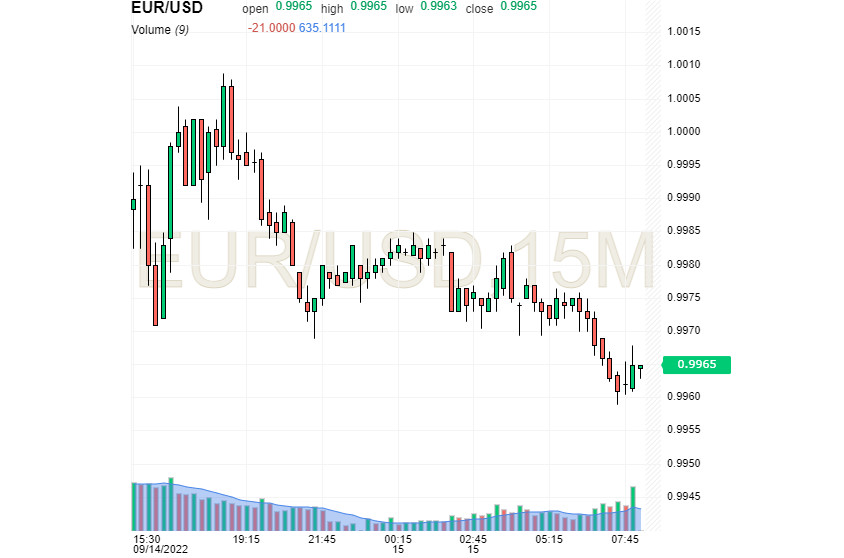
The US currency was swirled by a whirlwind of continuous movement, not giving it a break for almost a minute. The dollar has to be constantly in good shape to act ahead of the euro and other currencies. Against this background, experts fear the depletion of "dollar forces" and the subsidence of the USD in the long term.
According to market players and analysts, the rally that led the greenback to the peak of the price since 1985 will continue. However, this causes great inconvenience to other currencies, up to their collapse. As a result, the means of payment of other countries are plunging against the USD or require a rapid increase in rates in order not to be at the bottom. The dollar's strong growth against a basket of currencies (by 15% in 2022) dealt a crushing blow to financial markets. The main victims were the euro and the yen, which collapsed to lows over the past 20 years. The pound had the hardest time, which fell to its lowest in 40 years.
The catalyst for the widespread collapse of the market was the "hot" data on inflation in the United States. According to a report published on Wednesday, September 14, US inflation increased markedly in August, and decreased less year-on-year than the market expected. In the last month of summer, the consumer price index (CPI) increased by 0.1%. At the same time, experts expected the indicator to fall by 0.1% amid a steady decline in gasoline prices.
However, this factor did not work due to a sharp increase in consumer spending in the United States. According to current data, the basic consumer price index in the country increased by 0.6%, which is twice as much as expected. At the same time, the annual core inflation rate soared from July's 5.9% to 6.3%. According to analysts, this is the highest value recorded after a 40-year high reached in March. In the current situation, gasoline prices in the United States fell by 10.6% on a monthly basis, but were partially neutralized by rising prices for LNG and electricity. However, in the future, the effect of cheaper energy came to naught due to the rapid growth of housing and medical care prices (they increased by 0.7% and 0.8%, respectively).
Against this background, analysts' forecasts for a further rise in the interest rate by the Federal Reserve by 1 percentage point (pp) have intensified. Many experts began to lay such an increase at the Fed's next meeting, which is scheduled for September 20-21. Some of them expect an increase in a smaller volume (only by 0.75 percentage points).
According to analysts, the current situation provides significant support to the dollar and at the same time is a challenge to global central banks. Many world central banks were faced with a choice: to observe the weakening of national currencies or slow down this process by selling USD and raising their rates. The current macro data from the United States turned out to be negative for the markets, experts summarize. At the same time, the Fed management recognizes that inflationary pressure in the country remains high and hinders economic growth. However, the central bank turned out to be a hostage to the situation, since in order for inflation to return to the 2% target, it is necessary to continue raising rates, and this should be done in an accelerated mode.
Against this background, the US currency has steadily risen in price against the European one. The EUR/USD pair was trading at 0.9965 on Thursday morning, September 15. Since August inflation in the United States turned out to be higher than forecasts, market participants expect the Fed to raise the rate further (by 75 bps) at the upcoming meeting.

Many experts are sure that now there are almost no factors that can prevent the dollar's growth. According to Rabobank's currency strategists, while US rates are rising, the greenback will strengthen. Analysts believe that this strengthening will continue until the end of 2022 and the beginning of 2023. The "tailwind" for the USD is the reliability and relative stability of the American economy.
However, the prolonged strengthening of the greenback creates problems for US trading partners, as the growth in the value of imports denominated in dollars increases. This hinders the curbing of rampant inflation in a number of countries, experts emphasize. Asian countries, especially commodity importers, suffer the most in this situation. Against this background, the Japanese yen turned out to be the biggest outsider, which rapidly and sharply plunged.
According to experts, the dollar rally will end sooner or later, but the timing of its completion is difficult to predict. According to economists, in the long term, a rate hike in the United States, which should slow down the economy, will play against the greenback. However, the Fed will have to take measures to slow down the national economy in order to reduce the current level of inflation. The result is a vicious circle, from which it is difficult for the dollar to get out.
Currently, many market players are betting on USD growth, but analysts urge caution in this matter. In the short term, such tactics provide significant support to the greenback. At the moment, the market is in the process of reassessing expectations about the future course of the Fed's monetary strategy, especially regarding rates. Current economic reports from the United States increase the likelihood of a third consecutive Fed rate hike by 75 bps at the next meeting scheduled for September 20-21. Against this background, the markets allow an increase in the key rate by 100 bps at once, experts summarize.
 English
English 
 Русский
Русский Bahasa Indonesia
Bahasa Indonesia Bahasa Malay
Bahasa Malay ไทย
ไทย Español
Español Deutsch
Deutsch Български
Български Français
Français Tiếng Việt
Tiếng Việt 中文
中文 বাংলা
বাংলা हिन्दी
हिन्दी Čeština
Čeština Українська
Українська Română
Română

